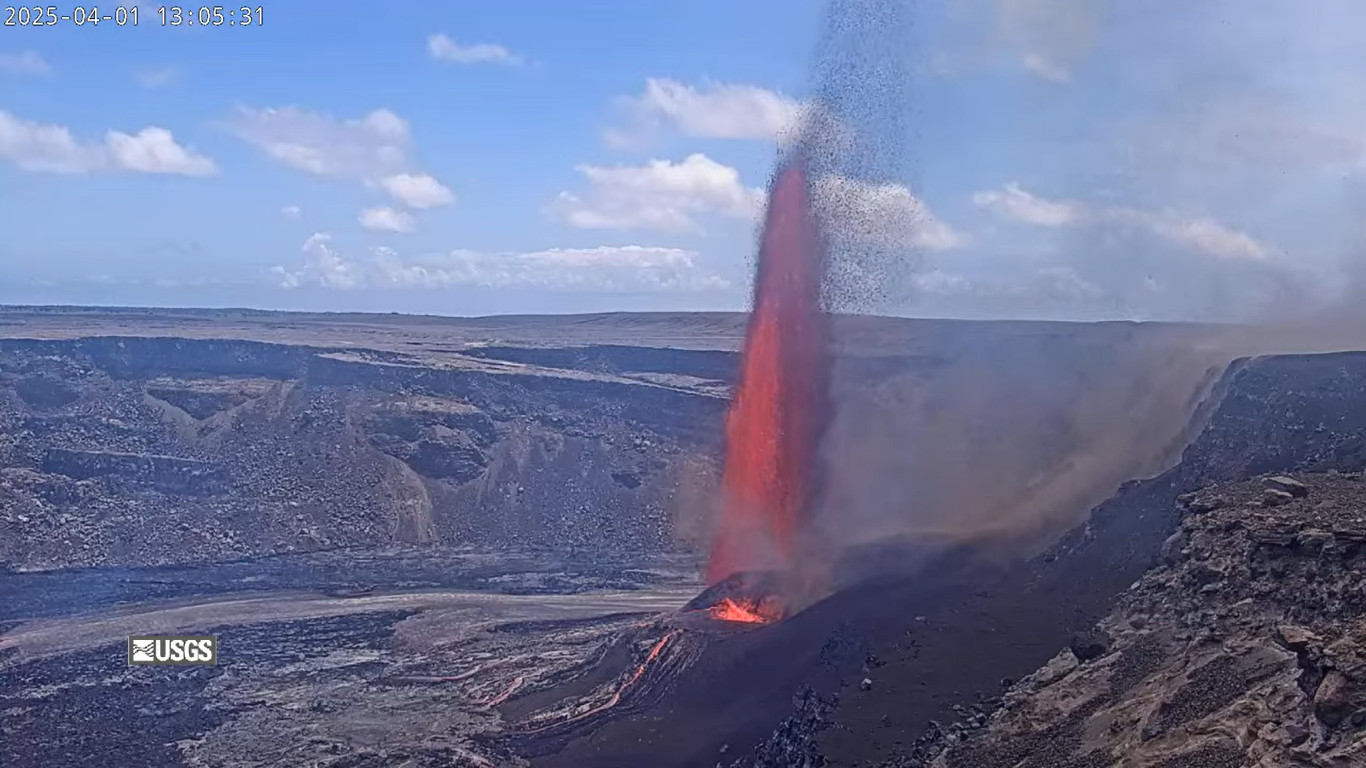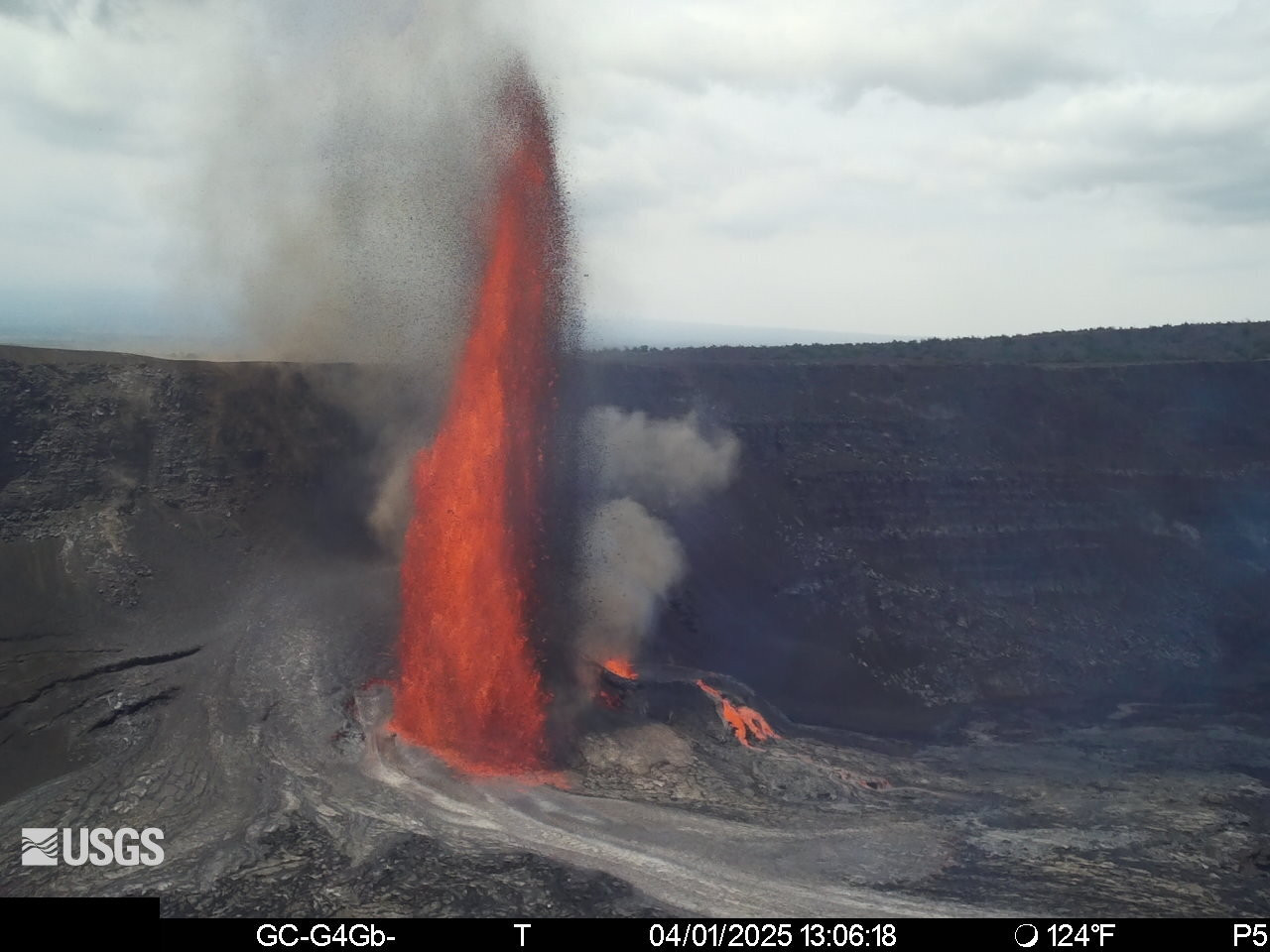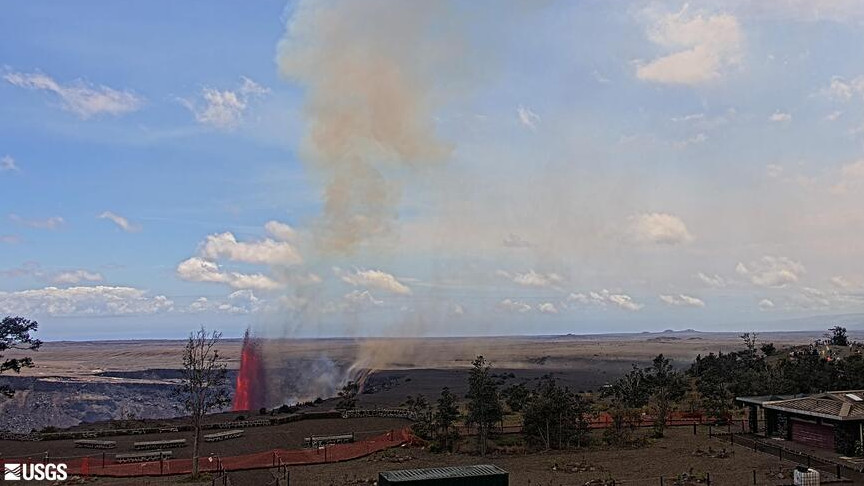Images and video are courtesy the U.S. Geological Survey and NPS. Video contains Hawai’i County Civil Defense radio message. A synthesized text-to-video voiceover was used in the narration for this story.
(BIVN) – The high lava fountain phase of Episode 16 in the Kīlauea summit eruption began at 10:24 a.m. on Tuesday, April 1st, prompting an alert from emergency officials.
The Hawaiʻi County Civil Defense issued a radio message, warning residents that tephra from the eruption was “being carried aloft and falling onto Highway 11 (Hawaii Belt Rd) in Kaʻū District between the 35 and 37 Mile Markers.”
“If you are in this area, please do not stop, do not get out of your vehicle, and keep your window fully rolled up,” the emergency officials said in the 12:49 p.m. message. “There are no road closures at this time, however, road closures could occur without notice.”
Episode 16 began late Monday night with low level activity, which evolved – as scientists anticipated – into more vigorous, high fountaining by Tuesday. The nature of the current episode was detailed in this USGS Hawaiian Volcano Observatory update posted at 11:22 a.m. HST:
The high fountain phase of episode 16 of the ongoing Halemaʻumaʻu eruption began at 10:24 a.m. HST on April 1, 2025, about 12 hours after the start of the episode. Fountaining from the south vent rapidly increased to over 200 feet (70 meters) in height by 10:40 a.m. HST and exceeded 700 feet (215 m) by 10:50 a.m. HST. Low dome fountaining and overflows continue from the north vent.
Episode 16 was preceded by weak spattering in the north vent that began at approximately 5:20 p.m. HST on March 31, 2025. Since 6:00 p.m. HST, spattering became continuous and increased to low fountaining (15-30 feet or 5-10 meters high). Lava level gradually rose in the vent and began overflowing out of the north vent cone onto the floor of Halemaʻumaʻu at 10:57 p.m. HST on March 31.
At south vent, small spatter fountains were first observed by field crews at 8:30 a.m. HST on April 1, but they probably were active deeper in the vent prior to that time. The south vent became more active at 10:12 a.m. HST on April 1 and began producing significant lava flows. Fountains in this episode are likely to exceed 1000 feet (300 meters) similar to episode 15. More details about the start of episode 16 can be found in the Kīlauea Daily Update.
Inflationary tilt on the UWD tiltmeter reached around 8 microradians since the end of the last episode, recovering about 90% of the tilt lost from episode 15. UWD tilt began to deflate and seismic tremor greatly increase at same time high fountaining began. Seismic tremor initially began increasing around noon HST on March 31, 2025, followed by a sharper increase around 4:30 p.m. HST the same afternoon. Tremor and infrasound signals continued to steadily increase until rapidly increasing with the onset of high fountains.
Emissions of SO2 gas are elevated, and during recent episodes have reached 50,000 tonnes per day or more, and similar amounts of gas are expected to accompany any high fountaining activity that may occur during episode 16. Currently, winds at the summit are forecast to be weak, which may allow the plume of gas to spread around the summit region of Kīlauea. In addition, visitors to Hawaiʻi Volcanoes National Park and residents of adjacent areas may be exposed to Peleʻs hair and other small fragments of volcanic glass and tephra being carried in the plume, as they were during episode 15.
The USGS Volcano Alert Level for Kīlauea remains at WATCH.




by Big Island Video News1:37 pm
on at
STORY SUMMARY
HAWAIʻI VOLCANOES NATIONAL PARK - The Hawaiʻi County Civil Defense issued an alert, warning residents that tephra was falling onto the highway in Kaʻū.